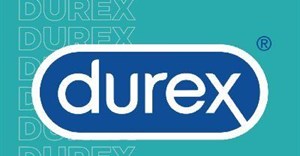
Subscribe & Follow
Jobs
- Senior Brand Designer Cape Town
- Brand Manager Midrand
- Experienced 3D Generalist/VFX Artist Johannesburg
- Multimedia Motion Designer Johannesburg
- Brand Promoter Nelspruit
Safeguarding the brand you've built
It started with Lance Armstrong admitting to doping, and continued with the international news of Oscar Pistorius shooting Reeva Steenkamp.
Of course, these are public figures with celebrity brands, but the brands that go wrong miss that very point: a brand does not belong to a board of directors or a group of shareholders, it belongs to the public. The average Joe on the street is the one whose thoughts about a brand will, at the end of the day, make or break it.
This is especially true since social media exploded onto the scene in the last decade and changed the way that brands interact with the public. With social media, consumers in the public sphere have been given more power than at any other time in history. Nowadays a bad review, poor service or a damaged product can go viral in 24 hours, as can a tacky ad campaign.
The fact is that brands now operate in a multi-faceted, multichannelled world, where consumers are over stimulated, tired and disillusioned. Branding and brand management becomes more than a job, it becomes a juggling act. There is so much that has to be kept in mind: the reputation of the brand, the imaging, getting social media right, the quality of the product or service, consumer satisfaction and the take-home of the shareholder.
So how do you safeguard the brand that you and your company have spent years building?
1. Know your audience
There may be a difference between your target audience and your actual consumers and as important as your target audience may be, it's your consumers that keep you in business. Do some research. Figure out who is buying your product and supporting your brand. Establish what it is they expect from you and then exceed it.
2. Know your identity
It's imperative that you determine your brand's ethos and ethics. Once these have been determined, they should influence every aspect of your business, from customer relations to internal management to marketing. Without ensuring that every employee and every service provider is aware of these, you run a very large risk of being misrepresented in the public sphere which is basically a gentle way of saying "you run the risk of watching your brand bomb badly". Durex is a great example of this. Their social media management company one day decided to post a series of offensive and misogynistic jokes through the Durex twitter account. While their social media following immediately peaked, it was more from horrified fascination than anything else. Pretty soon Durex were apologising, blaming the external company and distancing themselves from what, at least to the average member of the public, appeared to be their own remarks. Situations like this are avoided if everyone is on board with what you have determined your brand identity to be. (If you want to read more about this, Google "Durex Twitter disaster").
3. Stay clear and connected
Once you have an understanding of whom you are talking to (your audience) and what (and how) you want to be communicating (based on your identity), you need to stay clear (by being true to your identity) and stay connected. Let's take a brand like Woolworths as an example. Woolworths knows their audience (middle to upper class South Africans) and knows their identity (quality), but when their quality fails them (which it periodically will) and a customer complains, say via Twitter, they must engage with that customer rather than simply ignore the issue. Handling a situation with a customer in the public sphere, especially over a complaint, is an opportunity not only to regain that particular customer's loyalty, but even to gain the loyalty of others.
4. Prioritise customer service
Technology has not yet replaced the need for quality customer service. If anything, it has increased the craving from customers for a real and authentic personal interaction. A helpline with a friendly voice delivering efficient service can go a long way to setting your customers at ease and increasing brand loyalty. Good customer service with a human face will help keep your brand top-of-mind and create a relationship of trust between you and your consumers.
Going back to Lance, he had such a devout following at the time of the first doping allegations, had he responded honestly he might just have retained some loyalty. Instead, by lying to his fans for years, his fan base is now dismally small.
Yes, there is so much that brands have to bear in mind, and yes, it can be overwhelming to juggle ad campaigns against social media faux pas and yes, customers are smarter and more powerful than ever. But that is exactly what brands should be tapping into. People are seeking authenticity, and they will praise a brand for honesty sooner than attacking it for bad service.
The brand that succeeds in playing honest with its supporters (unlike Lance) will gain the advantage in an oversaturated market place. Achieving customer loyalty should be pretty much the ultimate goal of your brand, if you can prioritise this, your brand is bound to succeed.


















